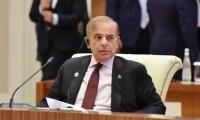As Pakistan struggles to address the challenges of our perennial current account deficits, Prime Minister Imran Khan has prioritised four areas to overcome these issues: attracting foreign direct investment (FDI); increasing exports; enhancing remittances; and attracting tourist dollars towards mountainous, coastal, religious and archaeological sites.
The question that then arises is: how will these ideas be realised and rid a large country like Pakistan from the repeated embarrassments it has suffered due to poor governance? If we examine the history of misgovernance in the country, we find that several good ideas for nation-building have been allowed to fall by the wayside and were seldom implemented.
These ideas fell victim to three weaknesses: lack of will/intent in decision-making circles that showed more interest in rent-seeking than nation-building; an inbuilt bias embedded over the years in our taxation and tariff policies, which make imports more profitable than domestic manufacturing, even in products where we have a comparative advantage; and the withering away of a nation-building culture and capacities within the government machinery over the last several years.
With Imran Khan’s well-known integrity, keenness for nation-building, and his close monitoring of the working of various ministries, the issue of lack of will/intent have been largely resolved. Embedded biases against domestic manufacturing and exports have been built into the system over the years and aren’t easily visible on a cursory glance. But since assuming office, Imran would have realised that our long addiction to imported ready-made solutions have eroded the culture and capacity for nation-building – both in our political as well as an administrative hierarchy.
Since the urgent capital crunch has been largely solved by his whirlwind tours of friendly countries, a culture of nation-building needs to be energised. A culture of nation-building, with work ethics, team spirit, respect for value of time, an urge for excellence and open minds, eschewing cliques and prejudices, would go a long way for this nation to realise its potential.
As the devil is often in the details, focus should be on addressing specific priority areas and not thinly spreading limited capabilities across several subjects. Above all, the PM should inculcate the ‘can-do’ spirit of his cricket days in his team to overcome the accumulated sins of the past.
In this article, let’s consider the first two of his ideas and put forward some tried-and-tested successful policies and practices from across the world that his team could take up without wasting any more time.
Let’s explore the first idea: investment. How do we attract investment in Pakistan when there is worldwide competition from several countries to attract foreign direct investment? Investment is driven by two factors. Push factors compel investors/companies to enter markets to extend the life cycle of their products or capture easy markets. They will enter Pakistan, even if we don’t organise road shows for them.
What we need to focus on are the areas where we need to pull investment and technology into export-oriented manufacturing. And this requires hard work. For that, Pakistan must be proactive and prepare a portfolio of specific projects where such investment is needed. This portfolio should provide essential commercial data on projects to whet the appetite of investors and get them interested in Pakistan.
In addition, we must not sit back and wait for investors to come to us. Seeking FDI is a competitive game that is played all over the world and we must venture into the home bases of investors and market our portfolio of projects through road shows and investment conferences.
But before we go there, Pakistan must do another thing: we must put together attractive features of our investment policies and incentives in languages spoken in our investors’ home countries so that more people can read about our investment policies and the attractive opportunities that we have to offer. Our investment material should also be published and circulated in Chinese, Japanese, Korean, Russian, Arabic, French, German, Spanish, Italian and other languages. This will break countless barriers and open many more doors for Pakistan.
If we follow these practical measures, Pakistan will succeed in drawing widespread investor attention towards its markets. This will also introduce healthy competition among investors.
Let’s now explore the next idea: exports. There is an elephant in our economic policies that no one is talking about: our tax and tariff structures actually favour imports over domestic manufacturing and exports. Our history has repeatedly shown that without removing inbuilt biases against the industrialisation of the domestic economy and disincentives to exports, mere currency depreciation won’t help our exports. We have opted for repeated IMF bailouts despite the depreciation of the rupee because we have avoided restructuring our economy in favour of domestic industrialisation.
The principal cause of our current account deficits lies in the fact that we don’t have many products to export. And this is so because we stopped the industrialisation of the economy some 40 years back and became addicted to ready-made imported solutions and incurring a mountain of debt.
During the 1970s, the share of the industrial sector in our GDP was equal to or higher than that of South Korea, Malaysia, Indonesia, Turkey and other countries. In the next 40 years, while these countries increased the industrialisation of their economies by between 80 percent and 120 percent, we could only increase industrialisation in our economy by a mere 1 percent. Herein lies the root cause of our current account deficits, which also resulted in our visits to the IMF.
So, we need an industrial policy, especially an export-driven one. There are several low-hanging fruits that can deliver immediate benefits by attracting investment and technology in agro-food industries, and making value additions to the existing basket of raw and low-value textile and leather products and IT products built through our natural and human resources. It is embarrassing that even though Pakistan is the fourth largest cotton-producer, it sells garments in world markets that fetch lower per unit value than those made in Bangladesh, Sri Lanka, Malaysia, Indonesia and India.
This brings us to the issue of mindset. Instead of taking the bottom end of products in world markets, we should incentivise high-tech content and discourage raw and low-value exports.
Lastly, our fragmented institutions that deal with investment, industry and export should be integrated. Their fragmentation creates barriers in the path of investment for export-oriented industries. A case for an integrated institutional platform – the Ministry of Investment, Trade and Industry (MITI) – was discussed in an article titled ‘A new ministry for Pakistan’ published in these pages on August 22, 2010.
If we succeed in removing these barriers and inculcating a positive change, we will finally turn concrete ideas of progress into real benefits for the people and our economy.
The writer designed the Board of Investment and the First Women’s Bank. Email: smshah@alum.mit.edu
A health worker administers polio vaccine drops to a child during a door-to-door polio vaccination campaign in Lahore,...
Armed militants of the banned Tehreek-e-Taliban Pakistan pose for a photograph in Orakzai Agency. —...
An aeroplane of the national flag carrier of Pakistan is seen in this file photo. — AFPWhile Pakistan considers...
Representational image of a graph depicting various variables. — APP/FileInitiated by the centre and fiercely...
In this picture taken on April 16, 2023, people throng a market area during shopping in Lahore. — AFPOne of the...
Honour crimes also target men. In Sikandar Ali Lashari vs The State, SHC upheld conviction passed by ATC for honour...







